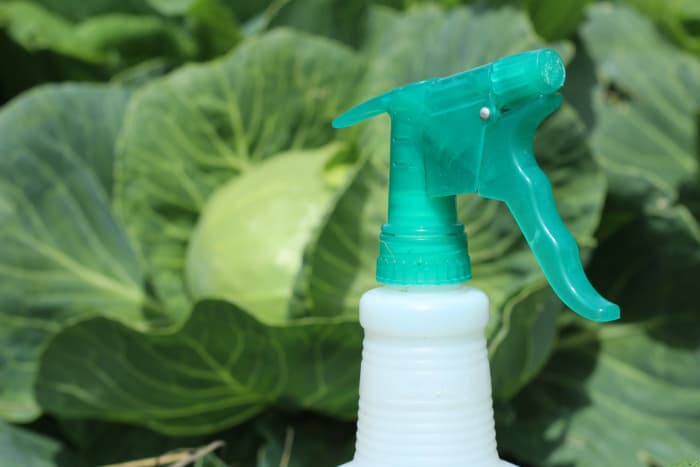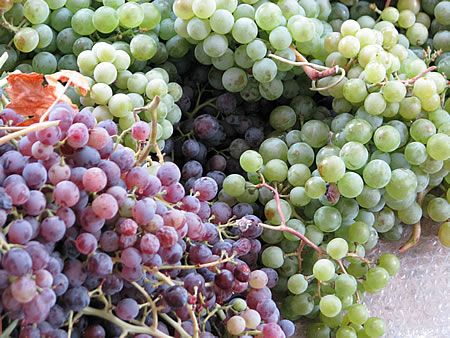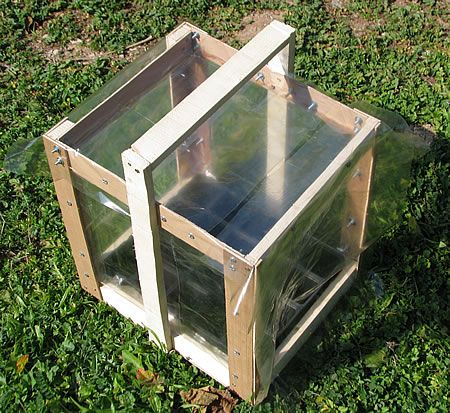With these recipes we can make 7 eco-friendly insecticides with materials we all have at home or can easily get.
We use red cayenne pepper, leaves from aromatic plants, cottonseed oil, garlic, tomato leaves, diatomaceous earth and alcohol.
The most chemical of all the ingredients, is dishwashing liquid!
Start using these eco-friendly insecticides at the first signs of infestation. The sooner you start treatment, the more effective it will be.
Before spraying the whole plant, test on a small part of the plant first. If we see no signs of discomfort, spray the entire plant. Do not spray at midday. Do not spray when the temperature is close to 40 degrees Celsius.
For eco-friendly fungicides, see the article: Eco-friendly fungicides we can make ourselves.
Red cayenne pepper
Ingredients:
- 0.5 tablespoon of red cayenne pepper
- 1 liter of water
- 2 drops of dishwashing liquid
Preparation:
Mix the ingredients well and leave for 12 hours.
How to use:
Stir before use.
Spray the top and bottom of the leaves once a week.
Treats:
Controls insects especially on plants of the cabbage family (cabbage, broccoli, cauliflower, Brussels sprouts).
According to Clemson University entomologist Geoff Zehnder, this red pepper blend, when used on cabbages, is more effective than most chemical insecticides.
Aromatic plants (basil, lavender, rosemary, peppermint, artemisia, sage)
Ingredients:
- A handful of aromatic plants (basil, lavender, rosemary, peppermint, artemisia, sage)
- 2 liters of water
- 1 glass container with a lid that holds 2.5 liters of water
- Tulle bag
Preparation:
Gather tops from these aromatic plants so they are fresh.
Soften, squeeze in your hands, so that they break slightly.
Place the aromatic plants into the bag.
Put 2 liters of water into the glass container.
Put the bag with the aromatic herbs into the water container and close the lid.
Leave it in the sun for 3 days.
Remove the bag and drain the liquid so that there are no solid residues of the herbs in it.
Until the liquid is used, place it in a closed glass container and store it in a dark and cool place.
How to use:
When ready to use it we put it in a sprayer. Add 3 drops of dishwashing liquid or liquid soap and mix well.
Spray the tops and bottoms of the leaves.
Treats:
Aphids, mealybugs, mites, beetles, crickets, cabbage caterpillars, beetles.
Cottonseed oil
Materials:
- 1 cup of cottonseed oil (not used)
- 1 tablespoon of dishwashing liquid
Preparation:
Mix ingredients well and store until ready to use.
We need to dilute it before using it.
Put 500 ml (half a liter) of water in the sprayer, add 4 teaspoons of the mixture. Stir well.
Method of use:
Spray your plants very well. It can be used on vegetables, herbs and ornamental plants.
It treats:
Soft-bodied insects such as aphids, mealybugs and mites.
Garlic
Ingredients:
- 12 cloves of garlic peeled
- 1 liter of water
- 1 cup of cooking oil (cottonseed oil is recommended)
Preparation:
Put the garlic cloves in a blender and make a salve.
Add one liter of water and mix well.
We let the mix settle for 4 hours.
Drain the mixture to obtain a clear liquid without solids.
Add 1 cup of cooking oil (cottonseed oil is recommended).
Stir.
This concentrated mixture can be kept for several weeks without losing its capacity.
Method of use:
Place in sprayer, 4 liters of water and add one cup of the concentrated garlic mixture.
Mix well and use.
It treats:
Treats a wide range of insects.
Tomato leaves
Ingredients:
- A handful of fresh tomato leaves (tomato leaves are poisonous)
- 2 liters of water
- 1 glass container with a lid that can hold 2.5 liters of water
- Tulle bag
Preparation:
Wear gloves and collect leaves from the tomato plants.
Soften, press the tomato leaves with your hands so that they break slightly.
Place the tomato leaves into the bag.
Put 2 liters of water into the glass container.
Put the bag with the tomato leaves into the water container and close the lid.
Leave it in the sun for 3 days.
Remove the bag and drain the liquid so that there are no solid residues of the leaves in it.
Until the liquid is used, place it in a closed glass container and store it in a dark and cool place.
Method of use:
When we are ready to use it we put it in a sprayer. Add 3 drops of dishwashing liquid or liquid soap and mix well.
Spray the tops and bottoms of the leaves.
Treats:
Effective against grasshoppers and mealybugs.
Diatomaceous earth
Pour diatomaceous earth into the soil around the plants you want to protect.
Treats:
Ants of all sizes, Lepidoptera caterpillars, Coleoptera larvae, leafhoppers, fleas, lice, bedbugs, mites, ticks, cockroaches, snails, slugs, spiders, termites, lepidoptera, centipedes, flies, scissors, aphids, thrips, subterraneans, etc., without killing the beneficial earthworms!
What is diatomaceous earth:
K. TH. K.K. Bouchelos, Professor Emeritus of the Agricultural University of Athens, tells us that “diatomaceous earth is a mineral. Diatoms are a very important group of phytoplanktonic organisms and are abundant in both marine and inland water ecosystems (lakes and rivers).
They are microscopic organisms, although many of them form societies (colonies) in chain form or in starfish and other formations. These plants remain close to the surface and make up a proportion of the plankton. when they are dead, the thin skeletons (frustules), which are the hard, porous outer cell wall of diatoms, remain, with silica as its main component (up to 90%).
These diatom communities are often used as biological indicators in programs to monitor the ecological status of waters.
The typical chemical composition of dry diatomite is: 80 – 90% silica, 2 – 4% aluminium oxide and 0.5 – 2% iron oxides.
It is largely used in the refining and clarification of wines and beer, but also in the treatment of wastewater. It is also used as a filler in paints and plastics and in the production of adsorbent products such as face masks.
Diatomaceous earth is 100% natural, very effective and does not harm pets or humans at all (it is often used for ectoparasites and endoparasites). Freshwater diatomaceous earth, can be used as a soil substrate in hydroponic gardens and container plants especially in bonsai, in storing grain and feed to prevent caking of products and as an insecticide.
The main forms under which diatomaceous earth is marketed are Food Grade, Feed Grade, Pool Grade and Agricultural Grade, each resulting from a different treatment.
As an insecticide, unincinerated diatomaceous earth is suitable, as overheating reduces its effectiveness.
Agricultural Grade and Garden/Food Grade are suitable for safe use in homes, warehouses, crops and even vegetable gardens. Applied on or around vegetables, there is no safety period for eating them, only washing. It is very cheap, non-toxic to humans, warm-blooded animals and the environment and, most of the time, more effective than the pesticides of the phytochemical companies. Insects and other pests do not develop resistance to diatomaceous earth.”
Alcohol
Materials:
- 250 ml of alcohol
- 1 teaspoon of dishwashing liquid
- 1 liter of water
Preparation:
Mix the ingredients well.
How to use:
Spray your plants very well, making sure it goes on the top and bottom of the leaves.
Repeat in 7 days.
Treats:
Soft-bodied insects such as aphids, mealybugs and mites.
Sources:
35 Pest and Disease Remedies
Homemade Organic Pesticide for Vegetables
Natural Homemade Pesticides: Recipes & Tips
Natural Garden Pest Control
Tags: DIY • ECO-FRIENDLY • I MAKE • PESTICIDES • PLANT PROTECTION





